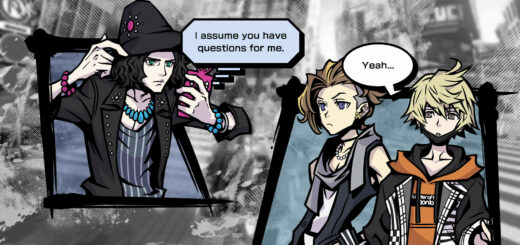Heroland E3 Impression
Amidst several sequels and re-releases XSEED Games had to show at E3 this year, Heroland marks a new and wholly original concept to take note of. During the demo, I spoke with the game’s localization editor, Derk Bramer, to find out more.
On a wholly surface level, Heroland doesn’t seem too different from many other dungeon-crawling RPGs. You put together a battle party, choosing from various character classes, and clear dungeons to collect loot. But in this case, it’s what’s beneath the surface that gives the game a uniquely clever spin. In Heroland, almost everything is fake. In fact, the island of Heroland itself is nothing but a plastic tourist trap, designed to offer everyday citizens the experience of being a legendary hero by slaying fearsome monsters. It’s a theme park, staffed by costumed workers and relying on animatronics. As the park’s latest hire, an amnesiac youth washed up on Heroland’s beach one day, it’s your job to play tour guide to groups of would-be heroes in search of the adventure of their lifetime.
This kind of send-up of traditional genre tropes already provides the game a fresh feeling all on its own, and it is only enhanced by the playful ways in which the developers have tweaked its other systems. The narrative is delivered in dialog scenes as players visit the island’s various locations from a park map, with crucial story locations identified by markers. Early on, I met Prince Elric, an obnoxious young man who has bought Heroland’s PR spin hook, line, and sinker, and now thinks that defeating its challenges is the ticket back to his real-life throne. He has a derisive, comically annoying attitude toward the player character, viewing him as clearly inferior, but as the customer, he must be treated with kid gloves.
Prince Elric becomes the first of twenty possible party members, all of whom will have unique personalities and personal storylines and side quests that will be unlocked by raising their friendship levels with the main character, i.e. taking them into dungeons and “leveling”. Characters represent unique classes, and a dungeon run requires choosing four of them to form a party. Furthermore, all of the characters have a very charming, 2D pixel look to them; they look like thick, bendable patches or badges you just want to peel off the screen.
But it’s the dungeons themselves that feel most different, and will likely either make or break the game for players. For starters, dungeons are navigated by simply moving the party along a path nodes; each node contains some event, such as a battle, shop, boss, or treasure. Later dungeons will also feature branching paths, though the one I saw was a straight shot from left to right.
Getting into combat is quite a bit different from other games. As the group’s tour guide, and an employee of Heroland himself, the player character doesn’t get directly involved in combat, or even issue commands. Party members act on their own accord. The player watches over the proceedings, and does have the option of jumping in in order to use an item to help the party, pick group strategies, or, in emergencies, override a character’s action with a particular command. But the tour guide’s influence is limited to a cooldown timer, and so must be used judiciously. I saw this system in action, but didn’t have much chance to evaluate how well it functions, say, during tougher boss encounters. However, I can see the relative lack of player participation being an annoyance for some.
It’s up to players to decide whether the game’s uniquely-flavored premise is enough to override some of its other quirks, and if the combination of all these original ideas sounds enticing. Heroland is set to release this fall on Nintendo Switch and PlayStation 4.
















Recent Comments